HAUNTED HOUSE All Student Theater presents a haunted house for the spooky season. (Scene, pg 3)

CAPTION CONTEST Submit a caption for this week’s caption contest (Forum, pg 6)

FOOTBALL STILL UNDEFEATED
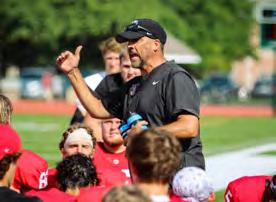
The Bears have out scored opponents 315-93 this season. (Sports, pg 8)
WILD canceled due to capacity issues
AVI HOLZMAN, LILY TAYLOR, ZACH TRABITZ, JULIA ROBBINS CONTRIBUTING WRITERS AND EDITOR-IN-CHIEF
CAPACITY OF ATTENDEES
The University’s semian nual concert, Walk In Lay Down (WILD), was canceled this semes ter following concerns over student safety at the event and the adminis tration’s inability to find a solution for a late-in-the-game attendee capacity restriction from the Uni versity’s Emergency Management (EM) department.
Administrators received word on Sept. 30 from EM that, based on newly received guidelines from the National Fire Protection Asso ciation (NFPA), the capacity for Brookings Quad could not exceed 3,500 people for the event. WILD has not previously had an attendee cap.
Three days later, on Oct. 3, Cam pus Life administrators informed SPB of this new capacity limit.
According to administrators, WILD planners were unable to find a ticketing solution that would guar antee that only 3,500 people could gain entrance to Brookings Quad, largely due to how late in the plan ning process the EM department gave Campus Life notice of the NFPA guidelines.
SPB wrote in an email sent out by their President Miri Goodman that administrators told SPB that the limit on concertgoers was 3,000, and Goodman then negotiated that number up to 3,500, which was EM’s original cap based on NFPA guidelines.
The 3,500 cap falls short of the 7,800 undergraduate population, which SPB and administrators both expressed a desire to be able to fully serve at WILD concerts.
Between the time SPB received the order of a 3,500-person limit and the public announcement of WILD’s cancellation, SPB and administration met multiple times to explore solutions that would allow the concert to take place.
“They came to us and said ‘we want you to try to [create] a ticket ing system,’” Goodman said. SPB countered by telling administra tors, “This is your rule, you’re the paid professionals, can you please [set up a] ticketing system — it was not within our scope.”
With that, Coordinator for Programming and Marketing at Campus Life Jasmine James set out to find a ticketing system that would control crowds.
“To be honest, we were a bit too close to the date of the show to implement something that would allow us to make sure that only
WashU students were in the quad, and that the tickets couldn’t be replicated — that was a really big barrier,” she said. “We found one system, but it wasn’t secure enough. I think if we had a bit more time we could’ve gone that way.”
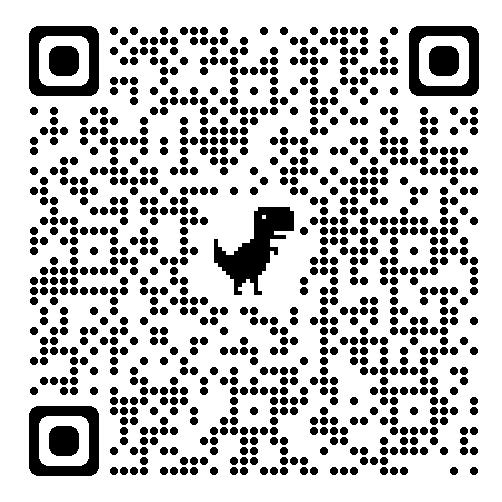
The University and SPB stressed that WILD has historically been accessible to every undergraduate student, so limiting the number of attendees raised concerns about equity and inclusivity.
Freshman Cole Bernstein said WILD is advertised as one of the University’s main school-wide events, and that limiting atten dance would defeat the point of the concert.

“I remember when WashU was sending all their promotional stuff to get us to apply, one of the big things was the ‘every semester con cert,’” Bernstein said. “WILD was seemingly an inclusive thing.”
Dean of Students Rob Wild said that SPB was unwilling to help with figuring out a ticketing system because they did not want to limit the capacity of an event that is sup posed to be open for all students.
“The fact that we didn’t have a good ticket system is relevant,” Wild said. “But the bigger issue is that the students that we were working with were not interested in the tickets.”
Goodman said that she would have supported holding the event even “If [ticketing] was the only option.” However, she added that the “rudimentary” system that administration was forming didn’t allow for the transfer or denial of tickets, and that there was no way to re-allocate forfeited tickets.
SPB and administrators also explored alternative locations as possible options for WILD to still take place. Mudd Field was
proposed, but Assistant Director for Campus Life Peggy Hermes said that there were too many logistical issues to solve in time for this semes ter’s WILD.
“We probably are going to have to [use Mudd Field] for the Spring,” Wild said.
Additionally, the planners dis cussed moving the event to Nov. 11, but the chosen artist Swae Lee was not available for that day.
CROWDING DILEMMA PRE-CAPACITY CONSTRAINT
Before news of the 3,500 person cap, SPB and administrators were already faced with mitigating issues surrounding overcrowding after a record-breaking attendance at the previous concert.
Last semester’s WILD boasted an attendance of over 5,000 stu dents, resulting in overcrowding inside Brookings Quad where WILD has been held since its incep tion in 1978.
Following the event, Wild, along with other administrators and WUPD, met at a standing WashU Cares meeting on May 2. Wild and several others, including last year’s Interim Police Chief, stayed behind to discuss WILD-specific safety concerns.
“We had a very high-level dis cussion about some of the things that we would need to have in place as we move towards fall WILD,” Wild said. “That's where Jasmine and the team started work in the summer about some of those safety measures.”
Administrators attempted to come up with solutions for over crowding prior to the cap put on attendance. At this point, they were
looking to increase student safety without limiting how many people could attend the concert.
“The advising staff from Cam pus Life had worked out what we believed were two good solutions to safety related to the crowd,” Wild said. “The ideas were a proposed redesign of the stage into a T-shape and increased security presence to decrease crowd crushing issues, especially near the stage.”
Before receiving the 3,500 capac ity limit notice, Wild said they moved ahead with both of those solutions “in a way that I think was very productive and that all of us felt fairly comfortable with.”
DISCOURSE SURROUNDING EMAILS
Campus Life released their state ment regarding the cancellation of WILD via an Instagram post on Oct. 14. SPB sent out an email responding to the cancellation of WILD and how they felt the admin istration had handled the event on Oct. 16.
SPB’s email heavily criticized both how the University han dled their communication with the student body surrounding the cancellation of WILD, and their communication with SPB through out the planning process.
In their email to the student body, SPB said that “[We] asked [the administration] to cut out cer tain paragraphs [in their email] due to their misleading natures, they did not.”
SPB confirmed with adminis trators that they did not want to sign on to Campus Life’s joint state ment about WILD’s cancellation, although Hermes said that SPB saw
the email three times throughout the week leading up to it being sent and had opportunities to request changes to its content.
Wild added that the adminis tration made edits to the statement based on feedback from SPB. “We had no intention of putting any blame on SPB, ever.”
SPB’s email also asserted “[Goodman] was forbidden from disclosing this information [about WILD getting canceled] to any one else, until an official statement was released” when she found out on Oct. 10th that the event was can celed, two days before Wild and Vice Chancellor for Student Affairs Dr. Anna Gonzales made the announcement to members of SPB.
When asked if the administra tion had told Goodman she was not allowed to tell people about the can cellation, Hermes said “That was not my understanding of how that conversation went.”
SPB also wrote in their email that “There was never any explana tion provided for why the capacity was limited to 3,500 persons, yet we have had approximately 50 years of WILDs with more than that limit of attendees.”
Along with NFPA’s guide lines, Wild said that out of the 40-50 WILDs he’s been to, last Spring’s concert was the most heav ily attended, which created “pretty significant safety concerns with the front of the stage area.”
He said that “multiple people had to be pulled out for getting crushed … [and there were] some people who required some minor medical attention on site as a result.”
Additionally, student leaders included in their SPB email that “Jasmine James and Peggy Hermes [told Goodman on Oct. 10] that WILD was officially canceled for reasons of ‘student safety.’ Truth fully, it was due to the fact that the administration could not come up with solutions for their require ments for the event.”
The only requirement that administrators told Student Life they were unable to solve was the capacity limit that Emergency Man agement told them about on Sept. 30.
All parties expressed hope for the success of spring WILD.
Despite the cancellation of fall WILD, Goodman said she hopes that the rollover of funds from the event will help SPB bring in an even more in demand artist for WILD next semester.
“I'm committed to trying to help SPB … provide great opportuni ties for WILD and other activities,” Gonzales said. “My hope [for] stu dents is that we're going to have a WILD in the spring.”
Expungement policy altered after student opposition
ALIANA MEDIRATTA CONTRIBUTING WRITER
Administrators altered the Washington University expunge ment policy to no longer allow students with interpersonal vio lence violations on their record to submit appeals for expungement on Oct. 11, after vocal opposition from numerous student groups.
On Sept. 8, Student Life pub lished an article overviewing the University’s expungement pol icy, noting that students who were found to be in violation of sexual assault, stalking, and physical abuse were eligible to have those offenses
expunged from their permanant record.
When the expungement policy was initially instated in fall 2021, it allowed students to submit appeals to remove student conduct viola tions from their permanent record, with the exception of academic integrity violations, which students are still unable to contest. Four spe cific offenses were initially eligible to be expunged five years post-grad uation; physical abuse or the threat of abuse, interpersonal violence, sexual assault or rape, and a range of drug offenses.
Now, with updated changes, only drug offenses are eligible to
be expunged five years after a stu dent graduates, with the three other categories of violation not allowing student appeals.
Dean of Students Rob Wild said he believed many students were not aware of the expungement policy until the article came out.
“That caused us to have a number of discussions with lots of different people,” Wild said. “People who would be eligible for expungement, people who are fac ulty, people who are administrators, students, and we listen to feedback.”
The decision to change the policy was made by the Student Affairs leadership team, which
CONTACT BY EMAIL EDITOR@STUDLIFE.COM NEWS@STUDLIFE.COM CALENDAR@STUDLIFE.COM
includes Wild; Nicole Gore, Asso ciate Dean for Student Conduct and Community Standards; and Anna Gonzalez, Vice Chancellor for Stu dent Affairs.
On October 3, MeToo WashU, a group that centers survivors of sex ual violence, took to Instagram to voice the organization’s opposition to the policy. Its post emphasized the importance of giving survivors power and agency, and included a focus on restorative justice and the dangers of what the group referred to as a “sexual violence epidemic.”
The statement read, “We’re demanding an end to expunge ments of interpersonal violence
CONTACT BY PHONE NEWSROOM 314.935.5995 ADVERTISING 314.935.4240
314.935.5938
[and] restorative justice options and increased investment to support survivors.”
The MeToo WashU page also linked to a petition for University
the rest!
CONTACT BY POST ONE BROOKINGS DRIVE #1039 #320 DANFORTH UNIVERSITY CENTER ST. LOUIS, MO 63130-4899
FAX
The independent newspaper of Washington University in St. Louis since 1878 WWW.STUDLIFE.COMVOLUME 144, NO. 7 THURSDAY, OCT 20, 2022
PHOTO BY ALICE GOTTESMAN | STUDENT LIFE
This is the fifth of the past six WILD concerts to be cancelled, after four were cancelled due to the pandemic.
Read
Philip Dybvig, Professor of Banking and Finance at the Olin School of Business, was awarded the 2022 Nobel Prize in Economic Sciences for his research on the vul nerability of banks during financial crises.
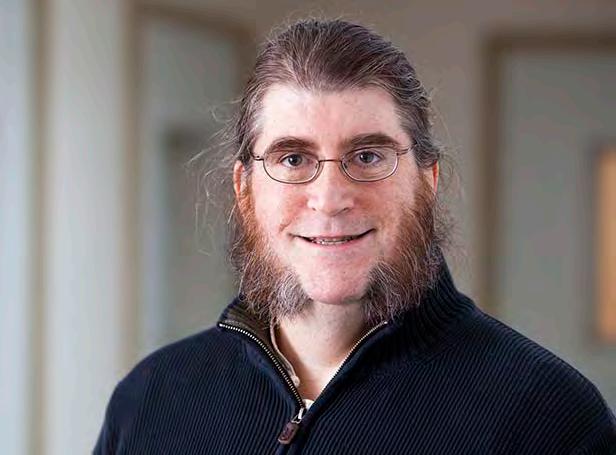
The Royal Swedish Academy of Sciences announced the recipients of the award on Monday, October 10th. Along with Dybvig, the recipients include two other econo mists, Ben S. Bernanke and University of Chicago pro fessor Douglas W. Diamond.
The Nobel Prize Organization noted in their announcement that each of the laureates “have sig nificantly improved our understanding of the role of banks in the economy” and that “their analyses have been of great practical importance in regulating financial markets.”
In 1983, Diamond and Dybvig wrote their semi nal paper, titled “Bank Runs, Deposit Insurance, and Liquidity” in which they introduced their
Diamond and Dybvig’s paper explored what factors cause bank runs to occur, and the economic model that they pioneered explores how liquidity causes banks to become unstable. This mathematical model has since been cited tens of thou sands of times and has been utilized to understand the proper course of action to take during a financial crisis.
Dybvig said he loves solv ing puzzles, which motivated him to conduct his research and write the subsequent paper.
“[I’m] curious about the banks, and the institutions, and the way people interact

Dr. Jane Goodall speaks at Washington University to inspire hope
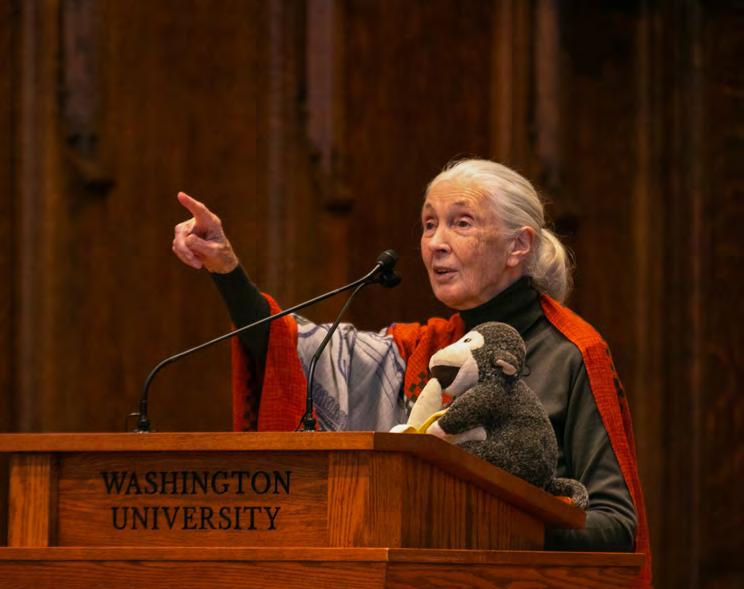 JIMMY HU AND NINA GIRALDO CONTRIBUTING WRITER AND JUNIOR NEWS EDITOR
JIMMY HU AND NINA GIRALDO CONTRIBUTING WRITER AND JUNIOR NEWS EDITOR
Jane Goodall, worldrenowned primatologist, anthropologist, and envi ronmental activist, spoke at Graham Chapel last Sunday, Oct. 9, reflecting on defining moments of her career and motivating students to bring positive change to the world throughout their everyday life.
Titled “Inspiring Hope Through Action,” Dr. Goodall’s speech discussed a range of topics spanning from her early interest in ani mals to her first few months in Gombe, Africa, where she worked under the renowned archaeologist Louis Leakey. Goodall stressed the need for the current generation to embrace the “indomitable spirit” that has helped her achieve what she has accom plished today.
At a time in which little was known about chimpan zees, Goodall took an unconventional approach to her research by com pletely immersing herself in the chimpanzee habitat in the forest of Gombe. Her discovery that chimpan zees make and use tools for survival altered the way in which human-animal rela tionships are perceived and revolutionized our under standing of chimpanzees.
After four months of almost zero progress in the forest, “one of the chimpan zees began to lose his fear of me,” Dr. Goodall said as she observed the chimpanzee “break[ing] off a leafy twig, and [using] it as a tool” to acquire termites, in an era when “science believed that humans, and only humans,
use and make tools.”
Mentioning her early fascination with animals that was encouraged by her mother, Goodall spoke of the unabating inspiration that her mother provided her with, and how she believes she is the single person most responsible for her success today.
“A different mother might have crushed that early sci entific curiosity, and I might not have done what I have done,” Dr. Goodall said.
Receiving funds from an American philanthropist and under the condition that she could not go alone, young Jane set out to Tanzania with her mother, who helped in providing medical care to the locals, in 1960.
“She started a good rela tionship with all the local people for me...and they accepted me from the begin ning because of what she did for them,” Dr. Goodall said.
Following her discov ery on the “humanity” of chimpanzees, Goodall was criticized by academics for her work as she did not have a college degree at the time and took an unscien tific approach to her work. For instance, she labeled the chimpanzees with names instead of numbers and described them as having personalities and emotions similar to humans.
Goodall founded the Roots and Shoots program that empowers young peo ple to inflict positive change within their community in 1999, as well as the Jane Goodall Institute, a wildlife and environment conserva tion organization, in 2002.
“If we get together, and we all play our parts, then we can start to heal some of the wounds we have inflicted and start to reverse the trend of climate change, and bio diversity,” she said.
Speaking on her
experiences of building the TACARE, a project by the Jane Goodall Institute aimed to protect chimpanzees by address ing poverty and supporting sustainable livelihoods, she recounted witnessing deforestation in Tanzania fueled by the need to survive.
“That’s when it hit me — if we don’t do something, to help these people find ways of living without destroy ing their environment, we are not going to save chim panzees, forests, or anything else,” she said.
Now, Dr. Goodall speaks around the globe on a mis sion to inspire younger generations to take action.
“I believe that there is a disconnect between the clever brain and the human heart, which is love and compassion,” Goodall said, “and I truly believe that only when head and heart work in harmony can we obtain our true human potential.”
Philip Dybvig, WashU Professor, receives Nobel Prize in Economic Sciences University holds conversation with fashion icon Diane von Fürstenberg
ZACH TRABITZ CONTRIBUTING WRITER
Fashion icon Diane von Fürstenberg spoke alongside YouTube’s former Head of Fashion and Beauty, Derek Blasberg about her career and life lessons, the fash ion industry today and its challenges, and her work to empower women, Oct. 12.

The two spoke exten sively of Fürstenberg’s prolific work and her influ ence on the fashion world. Along with creating and popularizing the wrap dress, Fürstenberg has designed clothes for celebrities ranging from Madonna to Catherine, Princess of Wales.
They also spoke of Fürstenberg’s philanthropy
DR. G’S FALL FESTIVAL
and public service, includ ing the annual grants that her company Diane von Fürstenberg (DVF) gives to women who work to transform the lives of other women.
At the event, Mayor Tishaura Jones deemed Oct. 12 Diane von Fürstenberg Day in St. Louis.
The audience was dressed in elaborate outfits to honor the visiting titan of the fash ion industry, and Fürstenberg herself donned a black-andwhite checkered pant suit while she gripped the packed audience with her stories.
Fürstenberg’s fiery sense of humor resonated with the audience, and laughter was frequent as she walked through her life and career.
“When I was growing up, I did not know what I wanted to do, but I knew that I wanted to be the woman in charge,” she said.
Her path to becoming a woman in charge of a major company was inspired by her mother, who she spoke about in her talk.
She said her mother’s resilience and strength as a “skeleton in a field of ashes” inspired her. Her mother, who spent 14 months in three different Nazi concentration camps, was told by a doctor that she should not have a child for at least three years after leaving the concentra tion camps in order to build back her health and ensure that her child would be okay.
Fürstenberg’s mother had her
nine months later.
“I was born, and I was not normal,” Fürstenberg said jokingly, drawing laughter from the audience.
During the Q&A portion of the event, she answered questions, including how she would manage her business differently if she could go back in time, what advice she would give to women in busi ness, and how she views fast fashion.
the rest!
MUDD FIELD
Celebrate all things fall with Dr. G. Join us for free food, games and music.
This event is a part of Dr. G’s Fun House series. For more events and information, scan here:
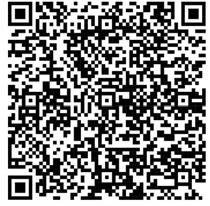
JULIA ROBBINS | EDITOR-IN-CHIEF| NEWS@STUDLIFE.COM2 STUDENT LIFE THURSDAY, OCT 20, 2022
OCTOBER 25 12 P.M.-2 P.M.
Diamond-Dybvig eco nomic model. This paper by Diamond and Dybvig elaborated on the purpose of banks in an economy and how that makes them more vulnerable to certain crises.
NATASHA CHUKA CONTRIBUTING WRITER
PHOTO COURTESY OF THE SOURCE
Philip Dybvig is WashU’s 26th Nobel Peace Prize recipient.
PHOTO BY HOLDEN HINDES | STUDENT LIFE
Dr. Jane Goodall spoke to students and faculty at Graham Chapel during her visit to WashU.
PHOTO COURTESY OF THE SAINT LOUIS FASHION FUND Mayor Jones deemed Oct. 12 Diane Von Furstenberg Day in STL.
Read the rest!
Read
Cobwebs, blood, and limbs: All-Student Theatre’s haunted house will be scarier than ever



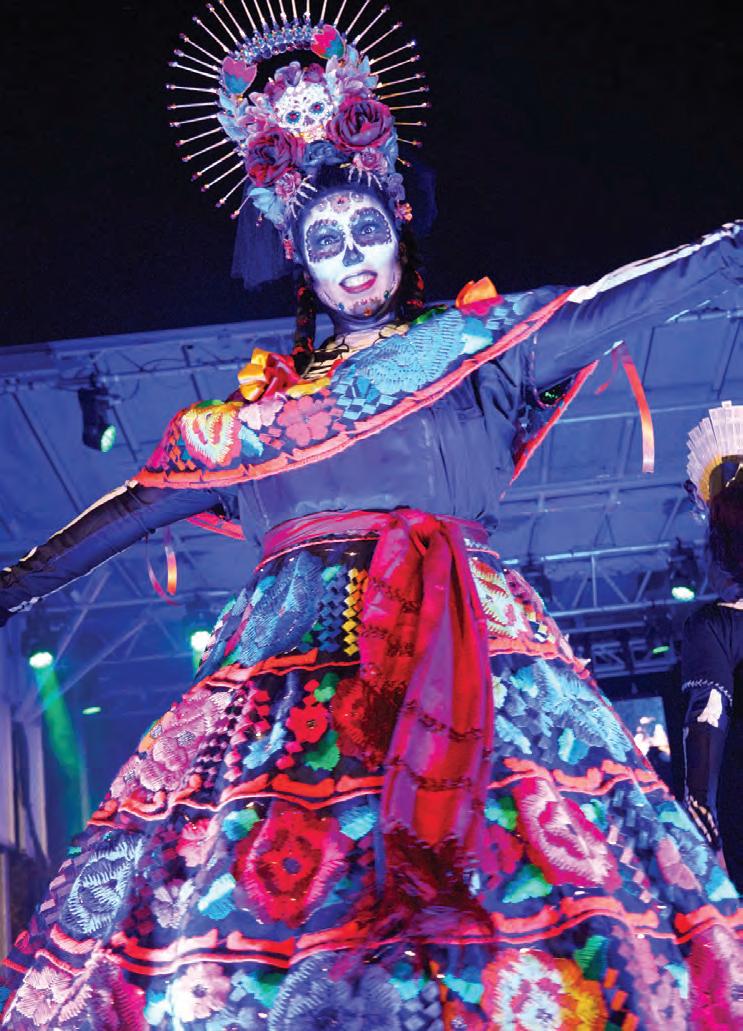 MIA BURKHOLDER CONTRIBUTING WRITER
MIA BURKHOLDER CONTRIBUTING WRITER
We all know that Par ent & Family Weekend can be scary. So why not change it up by getting spooked by someone other than your family?
All-Stu dent Theatre (AST) will be holding its annual haunted house this Thursday Oct. 20 through Saturday Oct. 22 from 7-11 p.m., and this year, the organization hopes it will be the scari est yet.
With an increased bud get and larger production team (from ten team mem bers last year to 28 now), AST is attempting to take the haunted house to new heights.Participants will enter the “house” in groups of eight, accord ing to the timeslot on their ticket, which can be pur chased for $2 in the DUC from 11-1 or BD from 6-8 until Oct. 21. The show is located in the Village House’s basement in the Black Box theatre, which will be converted into mul tiple rooms using curtains and makeshift walls.
AST’s cast and produc tion team worked together to create the plot under the leadership of sophomore writer and AST Events Chair Sierra Milligan.
“We got to add all of these wonderful ideas from different people who were just like, ‘Hey, I think I can make this work,’ and we’re like, ‘That is terri fying. Incredible! Thank you!’ and it’s really that collaboration makes some things so much better than what it could have been if it was just me writing it,” Milligan said.
This is the second year that AST will be putting on its haunted house. AST president junior Leah Coleman came up with the idea for the haunted house last year. Because of COVID, Washington University hadn’t held fall events in a while, and Coleman saw an oppor tunity to create a new University tradition. Last year’s haunted house com pletely sold out, which encouraged AST to add additional time slots this year.
This year, the haunted house is structured like an escape room. Milligan explained that partici pants will have to interact with items throughout the house in order to move on to the “next stage” of the room.
“It’s less of just walking through a hallway with jump scares, and more like you are the main character in a horror movie,” AST’s production manager, junior Sophie Waimon said. “There’s an over arching plot, [and] there will be familiar charac ters and more established plotlines rather than just someone in a creepy mask yelling at you.”
Because the struc ture of the production is more like an escape room, actors have to anticipate audience reactions. To prepare for this in rehears als, those who aren’t working on the scene act as a pretend audience and generate different scenar ios for the actors to use in their improv. Some actors’ scenes are more scripted, while others mostly focus
on “movement work,” Mil ligan explained. Through the rehearsal process, actors learned to mod ify the direction of their movement based on partic ipants’ physical responses.
Actors aren’t the only ones who have to con sider audience reactions. As the production crew works behind the scenes, members are constantly anticipating each partici pant’s reaction.

“When we’re putting up this wall, we have to make sure when we’re scaring the audience they’re not going to jump into it,” Mil ligan said.
AST Scenic Director sophomore Katie Plum explained that space is especially important in
a haunted house. “There are certain places where we can hang things, cer tain places where we have to build [walls] because we can’t hang curtains,” she asafety is a priority when designing the set, as peo ple will be moving through it in low lighting.
For the prop design, the production team had to keep in mind the “trifecta” of haunted houses: “cob webs, blood, and limbs, all of which you don’t always have on hand, so it’s a matter of figuring out how you’re gonna use each one of those in the haunted house,” said senior Carli tos Ayma Gonzalez.
The prop team also has to consider safety. Mem bers had to not only think
of how each item would be used by actors, but also how audiences would interact with them and how to keep those audi ences safe. This means eliminating sharp objects and being aware of which items participants might bump into in the dark.
Coleman suggested attending the haunted house on the night you are most exhausted in order to get the scariest experi ence. For the scaredy-cats interested in attending, she offered this consola tion: “Compared to most haunted houses you would do, it’s short. Even if you pee your pants, you pee your pants and you’re done.”
Copyright © 2022 Washington University Student Media, Inc. (WUSMI). Student Life is a financially and editorially independent, student-run newspaper serving the Washington University community. Our newspaper is a publication of WUSMI and does not necessarily represent the views of the Washington University administration. VOLUME 144, NO. 02 SCENE Julia Robbins Editor-in-Chief editor@studlife.com Via Poolos Managing Senior Scene Editor scene@studlife.com Jamila Dawkins Reilly Brady Managing Senior Forum Editors forum@studlife.com Clara Richards Managing Senior Sports Editor sports@studlife.com Ved Patel Managing Chief of Copy copy@studlife.com Sarah Wang Managing Senior Design Editor design@studlife.com Annabel Shen Senior Scene Editor Kellen Wang Emily Hu Head of Design Gracie Hime Cathay Poulsen Chief of Copy Holden Hindes Senior Photo Editor photo@studlife.com Kamala Madireddi Jared Adelman Senior Multimedia Editor multimedia@studlife.com Tuesday Hadden Head of Illustration Brian Cui Head of Business Development Tony Tong Senior Web Editor Paige Steuber Senior Web Designer Brooklyn Hollander Copy Editor Clara Richards Sydney Tran Designer Adrienne Levin Coleman General Manager a.coleman@studlife. com Sarah Huff Advertising Sales Manager huffs@studlife.com VIA POOLOS & ANNABEL SHEN | SENIOR SCENE EDITORS | SCENE@STUDLIFE.COM STUDENT LIFE 3THURSDAY, OCT 20, 2022 MORE INFO AT CWEHALLOWEEN.COM 8-10 PM ADULT COSTUME CONTEST 11 AM KIDS’ COSTUME PARADE 12PM TRICK OR TREAT 1PM CANINE COSTUME PARADE 2PM-12AM STREET PARTY FESTIVITIES ALL DAY T H E L E G E N D A R Y DRINK RESPONSIBLY. ANY ALCOHOLIC BEVERAGES CONSUMED IN THE EVENT ZONE MUST BE PURCHASED FROM APPROVED, ON-SITE VENDORS. SATURDAY OCT. 29 2022 $6,000 IN CASH AND PRIZES!
Two blood-splattered mad scientists appear to concoct a potion.
PHOTO BY IZZY SILVER
Students prepare to scare in bloodied, tattered costumes.
PHOTO BY IZZY SILVER
Just in: Ground-breaking research on WU medical school’s campus
GRACE TYAU CONTRIBUTING WRITER
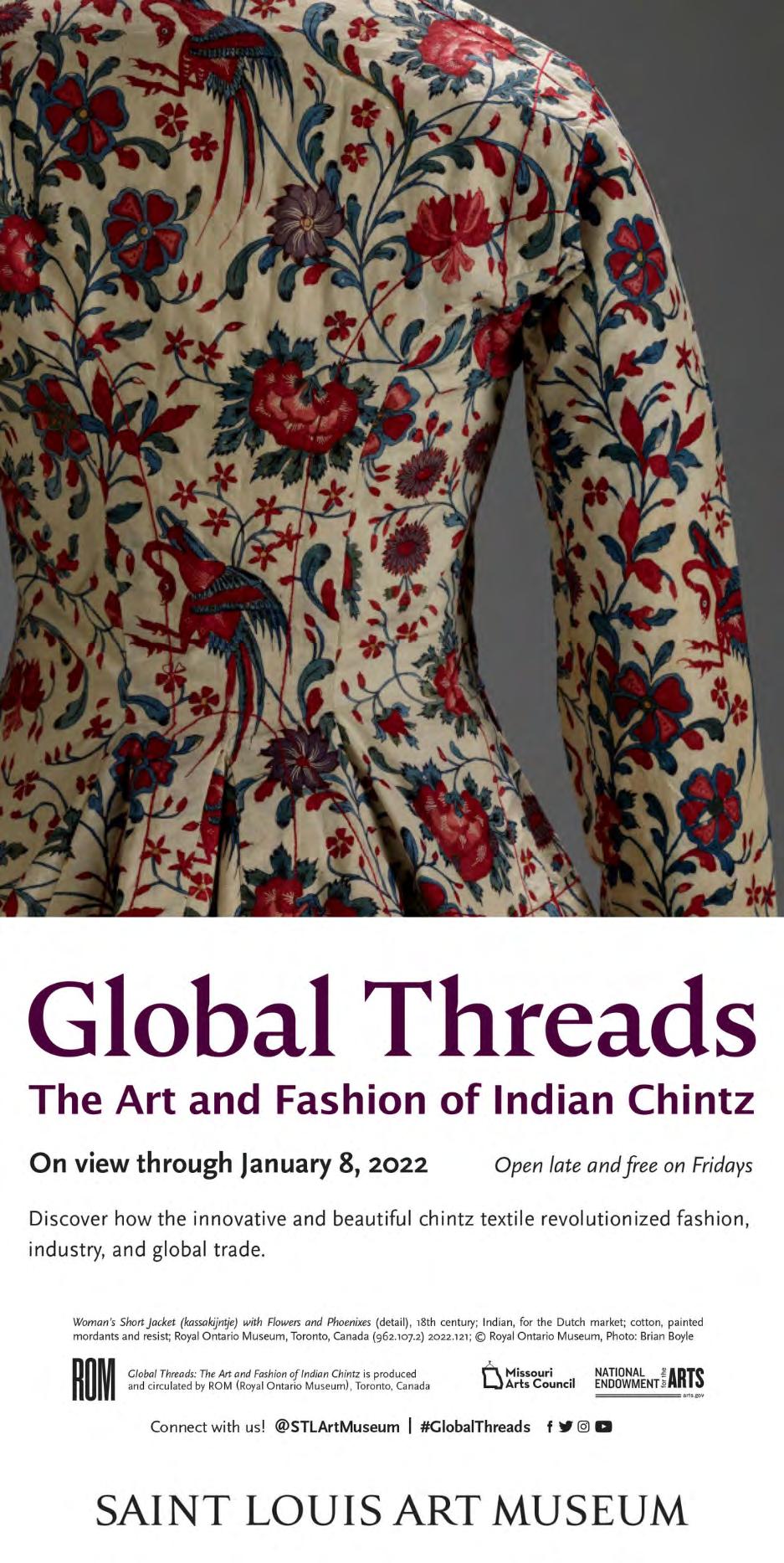
Washington University prides itself on its amount and diversity of research. The University has the fourth-largest funding port folio from the National Institutes of Health (NIH), and researchers work hard to develop and innovate for future generations. On the medical campus, there are a plethora of fascinating stud ies under way.
Dr. Larissa Thackray, Associate Professor of Infec tious Diseases and host of the “Let’s Meet the Virolo gists” podcast, specializes in using mouse models to look at viral infection.
She works in the Diamond Lab, which par ticipates in consortiums in different government branches like the NIH and Defense Advanced Research Projects Agency (DARPA). Currently, they are partnered with Moderna to look at the pre clinical efficacy of mRNA vaccines.
“We were tasked to have mice available and ready that had gotten a primary series of vaccines… those mice were sitting around for if we got a new variant of concern that would sud denly arise,” she said.
This happened with Omicron, for example
— their lab was given iso lates of the virus and made sure the vaccinated mouse model would work against those viruses. “We put it into vaccinated mice and ask, is the immune response good against that virus?” she commented.
These mouse models are used for other purposes as well. Recently, an intra nasal COVID vaccine has been developed, and mouse models have shown that it’s effective as a booster.
The lab is also involved in some ongoing work: determining how Africa effectively contained COVID outbreaks, study ing a potential persistent infection in the gut of long-COVID patients, and whether or not one should alternate arms when receiv ing vaccinations.
The WashU Behavioral Research and Imaging Neu rogenetics (BRAIN) lab has been utilizing data from large, open-source, longi tudinal studies to assess risk factors for mental dis orders. For a recent project, clinical science doctoral candidate Sarah Paul used data from the Adolescent Brain Cognitive Develop ment study, which followed nearly 12,000 children from ages 9-20.
Paul aimed to study pre natal cannabis exposure and its outcomes on chil dren, and whether or not
the timing of the exposure mattered. The research suggested that prenatal cannabis exposure was associated with higher risk for psychopathology later in the child’s life. “Canna bis use during pregnancy should be discouraged,” her paper read.
“We are studying asso ciation, so there is nothing showing causal connection here,” associate professor Dr. Ryan Bogdan said. Can nabis may not be directly casual for the negative out comes, but all factors taken together point toward the plausibility of causality.
“I think there’s this per ception that cannabis is a natural thing, that it has no ill effects,” Bogdan contin ued. However, it’s plausible that cannabis has more det rimental impacts when consumed during different developmental periods.
“We’re not advo cating for people to not use cannabis ever when they’re pregnant,” Dr. David Baranger, a postdoctoral research asso ciate, said. “[But] caution is warranted.”
“We’re already thinking about the next step of how to do this better,” Baranger continued. In order to obtain more controlled con clusions, they’ve begun to recruit pregnant can nabis users for the Healthy Brain Development Study,
another longitudinal study.
Professor of genetics Dr. Ting Wang works on the human genome, spe cifically in the field of epigenetics. The Wang lab, made of about 25-30 people, has recently undertaken the $500 million Breeding Ini tiative Cell Atlas Network (BICAN) project from the NIH.
The goal of the BICAN is really just to map the brain, but with better tech nology than has ever been available. “For the first time in the history of sci ence, we have the ability to have a molecular profiling of the genome of the brain cells, all the different types of cells in the brain.”
Wang explained that experiments with the whole brain, or even a sub-region of the brain, requires aver aging across thousands of cells. This has led to devel opment of technologies that allow geneticists to see at a single-cell resolution.
“The kind of data that we’re going to produce in this consortium is unprec edented. The amount is going to be way bigger than any other project,” Wang said. “We’re talking about hundreds of millions of cells.”
He mentioned that the kinds of questions this type of data can help address are broad. “We will have a bet ter understanding of the
heterogeneity or the diver sity of a brain cell…When you go to a textbook you see one brain, but it doesn’t say the genetic background of that brain. But now we’re at a position where we have the capacity to address that,” Wang said.
“We are [also] includ ing nonhuman primates and other modern working organisms to understand the evolution of the brain, how we have some specific cell types and other ani mals don’t. How does that influence human specific traits? Where did that cell come from? We’ll be able to address some of these questions.
The School of Medi cine has recently joined an NIH project called “Voice as a Biomarker of Health,” the goal of which is to diag nose patients solely based on the sound of their voice.
Dr. Philip Payne, Chief Data Scientist for the School of Medicine, works on WashU’s end of the consortium.
Research has shown that voice diagnosis “works across a really broad spec trum from ascertaining who might have hyperten sion (high blood pressure), to identifying potential can cers (specifically head and neck region), to identifying early signs of neurodegen eration like Alzheimer’s disease,” Payne said.
Through getting people with certain disorders to say set sentences, they can col lect data about how illness can change the voice.
“You could imagine in the future that you might have a video visit with your primary care provider, and instead of them having to have laboratory tests per formed or some sort of follow-up…we’d be able to detect [problems] just from the recording of your voice during the interaction.”
This type of diagnosis would lend itself well to the recent shift to virtual care due to the pandemic.
Mental disorders are also within the scope of possibility, and voice diag nosis could help those unable to get the behavioral health help that they need.
“The idea that we can expe dite diagnosis to get people to the right care provider more quickly through voice recordings would be really powerful,” he said.
Payne compared it to when you can tell your friend is depressed on a phone call. “The reality is you as a human being are recognizing certain speak ing patterns, intonation, tonal differences in people’s voice that may correlate with them being depressed. The question is, can we train a computer to recog nize those same features?”
WU lab researches magic mushrooms for mental health
JARED ADELMAN SENIOR MULTIMEDIA EDITOR
One of the biggest contemporary scientific renaissances is happening right now on the other side of Forest Park. And no, it’s not the cure for cancer. In fact,
the research subject is illegal in the state of Missouri.
The Healthy Mind Lab at Washington University School of Medicine is con ducting some of the most cutting-edge research into psilocybin, the active ingredi ent in “magic mushrooms.”
Psychedelics are a class of drugs that alter conscious ness. Psilocybin, LSD, and mescaline often conjure images of tie-dye shirts and hallucinatory mirages. How ever, the emerging field of psychedelic-assisted ther apy is producing promising
results for some of the most common mental illnesses such as depression, posttraumatic stress disorder (PTSD), and obsessive com pulsive disorder (OCD).
Dr. Ginger Nicol, associate professor of psychiatry, leads the psy chedelics research team within the Healthy Mind Lab with Dr. Joshua Seigel. Their research comes after a long history of stigma and restriction of psychedelic substances.
Nicol said that medical research into psychedelics first came into prominence in the 1940s and 50s. While indigenous use can be dated back to the earliest annals of history, the modern medical approach to psyche delics started in 1938 when LSD was accidentally syn thesized by Swiss chemist Albert Hofmann. Psychedel ics remained on the fringes of the academic commu nity, and Nicol added that researchers would some times consume substances themselves to document their effects.

Nicol said that research ers, such as former Harvard professors Timothy Leary and Ram Dass (then Rich ard Alpert), started to realize it was pretty safe.
“Much safer than alcohol or tobacco. And so the likeli hood that you will overdose and that you’ll have a bad outcome because of the dose is very low,” she said. “And so that, I think, made it easy for it to become part of the subculture.”
However, right as scien tific research began to take off and psychedelics entered the subculture of the 1960s and 70s, psilocybin, LSD, and other psychedelics were classified as Schedule I drugs. In other words, the federal government deemed there was no medical use and that psychedelics had a high potential for abuse.
“Psychedelics were very scary and threatening to the status quo and trying to maintain order,” Nichol said. “And then you have under neath all of that, the military
and CIA starting to do exper iments with it to see what could happen, if you could control people.”
Nicol explains that this, unsurprisingly, squashed all the budding research at the time. That was until Johns Hopkins University got approval for the first time to restart psychedelic research in 2000.
Research into psyche delics in the Healthy Mind Lab was kickstarted by Dr. Seigel and his mentor, Dr. Nicol, in 2020. Their first study focused on “preci sion functional mapping” of brain activity when under the influence of psilocy bin. Using functional MRIs before, during, and after tak ing a dose of the drug, Nicol and Seigel were able to get copious amounts of data from only a few subjects about areas of the brain that were active under the influ ence of psychedelics.
There were a few chal lenges associated with running the first psilocybin trial in Missouri. For one, there are very strict regula tions and licenses required for conducting a study with Schedule 1 drugs. It took two years from when Seigel pro posed the project until the first dose was administered.
Additionally, there were concerns that being in an MRI machine while under the influence of psilocybin can invite “negative experi ences”. That’s why Nicol and Seigel conducted interviews and generally selected par ticipants who had previous experience with recreational psychedelics, including a cur rent WashU undergraduate.
The focus of their study now turns to individu als with diagnosed clinical depression. One of the major benefits of psilocybin is that often, only one dose of 25mg (often considered the stan dard or “heroic” dose) is enough to sustain long-last ing change.
Results from some of the earlier Johns Hopkins studies show that there is a significant improvement in depressed patients for years
after taking psilocybin. However, this one-time cure might pose unintended con sequences for the future of psychedelics.
“Pharmaceutical companies are relatively unlikely to shift their focus from what they already have invested in… the pharmaceutical indus try doesn’t have very much interest in trying to spend a billion dollars to get this done” Nicol said.
Nonetheless, Nicol is optimistic about the future of psychedelics. “Decrimi nalization is happening in a lot of places and that seems to be the first step towards making it more accessible to people,” she said. Colorado, Oregon, and certain cities in California are leading the charge in decriminalizing psychedelics.
Nicol also noted that the COVID-induced men tal health crisis has created a greater need for mental health resources and solu tions. Nicol believes that the current research along with exploding demand means psychedelics “are definitely on [their] way to becom ing part of mainstream medicine, with the FDA approval.”
Additionally, Nicol said the stigma and public asso ciation with psychedelics are changing, and there seems to be a greater societal interest in mental health and possi ble alternate cures. “People are just super curious about this,” she said.
BY
VIA POOLOS & ANNABEL SHEN | SENIOR SCENE EDITORS | SCENE@STUDLIFE.COM4 STUDENT LIFE THURSDAY, OCT 20, 2022
ILLUSTRATION
TUESDAY
HADDEN
FORUM
Let’s cut the bull — freshman year can be really hard
SYLVIE RICHARDS CONTRIBUTING WRITER



Every Monday morning, I wake up early to make it to my 8:30 a.m. class — one I was forced to take as a result of the upperclassmen who claimed spots in every Introduction to Women, Gender, & Sexuality Studies class past 10 a.m. Walking through the crisp morning air, Elliot Smith, Slowdive, or an equally depressing artist blasts through my headphones. My Beats come off when class starts. But, the minute my professor says the class is over, the headphones cling to my ears once again.
When I envisioned my first months of college, it wasn’t exactly like this. Don’t get me wrong, I have friends at WashU who I really like. Yet, that doesn’t free me from the feeling that I haven’t found where I belong yet, and that my home is still 2,000 miles away, where most of my best friends remain.
In my experience, the vast majority of media representations of your first year of college are a fantasy. I haven’t found my passion and community through a cappella like Beca in Pitch Perfect, nor have I invented the next tech empire like Mark Zuckerberg in The Social Network (I’ll leave that to the McKelvey students). Instead, my first months of college have been underwhelming.
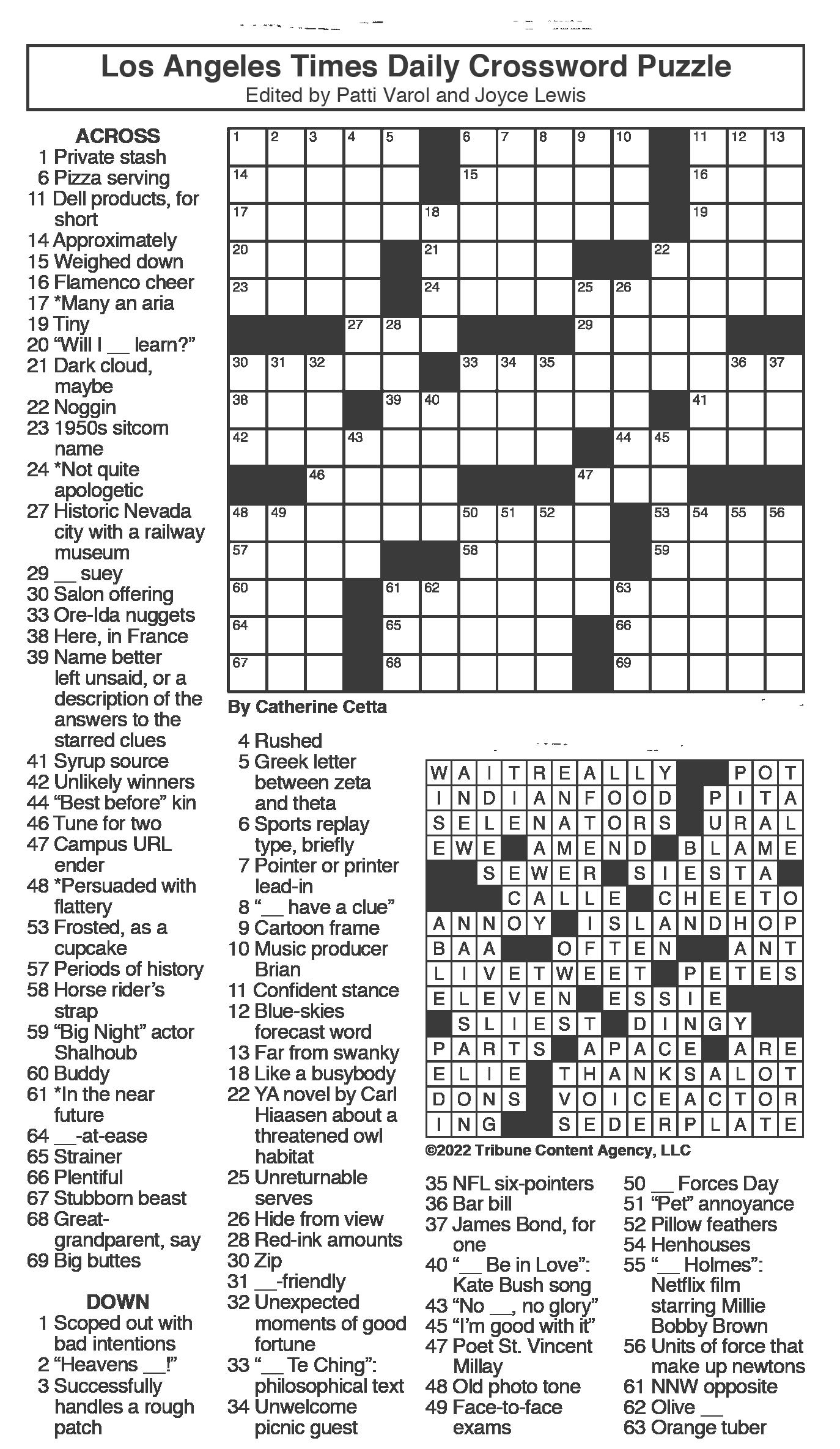
Saying goodbye to my parents before Bear Beginnings was harder than I thought it would be. I wasn’t the type of kid who got homesick easily.
In fact, I sought out school and summer programs that got me away from home. I yearned for a new environment and applied to mostly out-of-state colleges. Before leaving for St. Louis, my parents sat me down. “You can’t just not call us, Sylvie,” my dad explained. My mom made me promise that I’d at least text updates once a day. Let’s just say that during my two-week road trip to Seattle earlier last summer, I had forgotten the part where I had to actually tell my parents what I was doing.
That being said, I couldn’t control the on-and-off tears that led up to the final precollege goodbye.
Living in a completely new environment has made me realize all of the little things that I loved at home, from the Bay Area fog to my mom’s homemade pesto. Although I’ve enjoyed experiencing a new city and getting to live on an incredibly beautiful campus, it feels like I’m walking through a TV set. I feel detached and uncomfortable, constantly hoping I’ll wake up back in my bed at home one morning.
Almost every person I spoke to before college told me a variation of the same

PUZZLE Mania
concept: you will meet your best friends in college, you meet so many amazing people in college, et cetera. It’s true — there are many cool people at WashU, and I love the friends that I eat with in BD and do homework with every night in the common room. Yet, nothing feels the same as being able to do anything with your friends from childhood, and I miss the feeling of knowing someone so well that I can read their thoughts through a mere facial expression.
Plus, almost every conversation I have on a day-to-day basis feels like it follows a script. For the people in your classes: “What class do you have next?” or “Have you done the reading yet?” For those you just met: “What’s your major?” and “Where are you from?” After you run through the routine, you have an awkward goodbye and likely don’t speak to them until next class, or you give them a brief smile when you walk past them on campus.
I am tired of feeling uncomfortable where I live and missing everyone from home. But, most of all, it is so easy to feel like I am missing something everyone else has. Every day, I am flooded with Instagram stories of people with their “friend groups” posing in Forest Park, out at dinner, or in Olin Library. During the first couple of weeks,
when I asked if someone was homesick, I usually got a “not really.” And the majority of conversations I’ve had with people about their time so far at WashU are about how much they love the parties, the campus, or the sport they’ve joined.

After proposing this article to StudLife, I walked back to BD to meet the friends that I have from my floor. At the table, I started a conversation by saying, “I really miss home.” Everyone at the table enthusiastically agreed, and we started what became an hour-long conversation about feeling unwelcome in clubs, feeling uncomfortable with the new place, and that everyone has cliques of friends already.
The myth that college is the best time of your life — and that the first few months are when you meet the friends you’ll stay in touch with for the rest of your life — has coded us to feel isolated in our experiences. We keep from sharing our emotions for fear of sounding pathetic (as I feared when beginning this article) or reinforcing our feeling of loneliness.
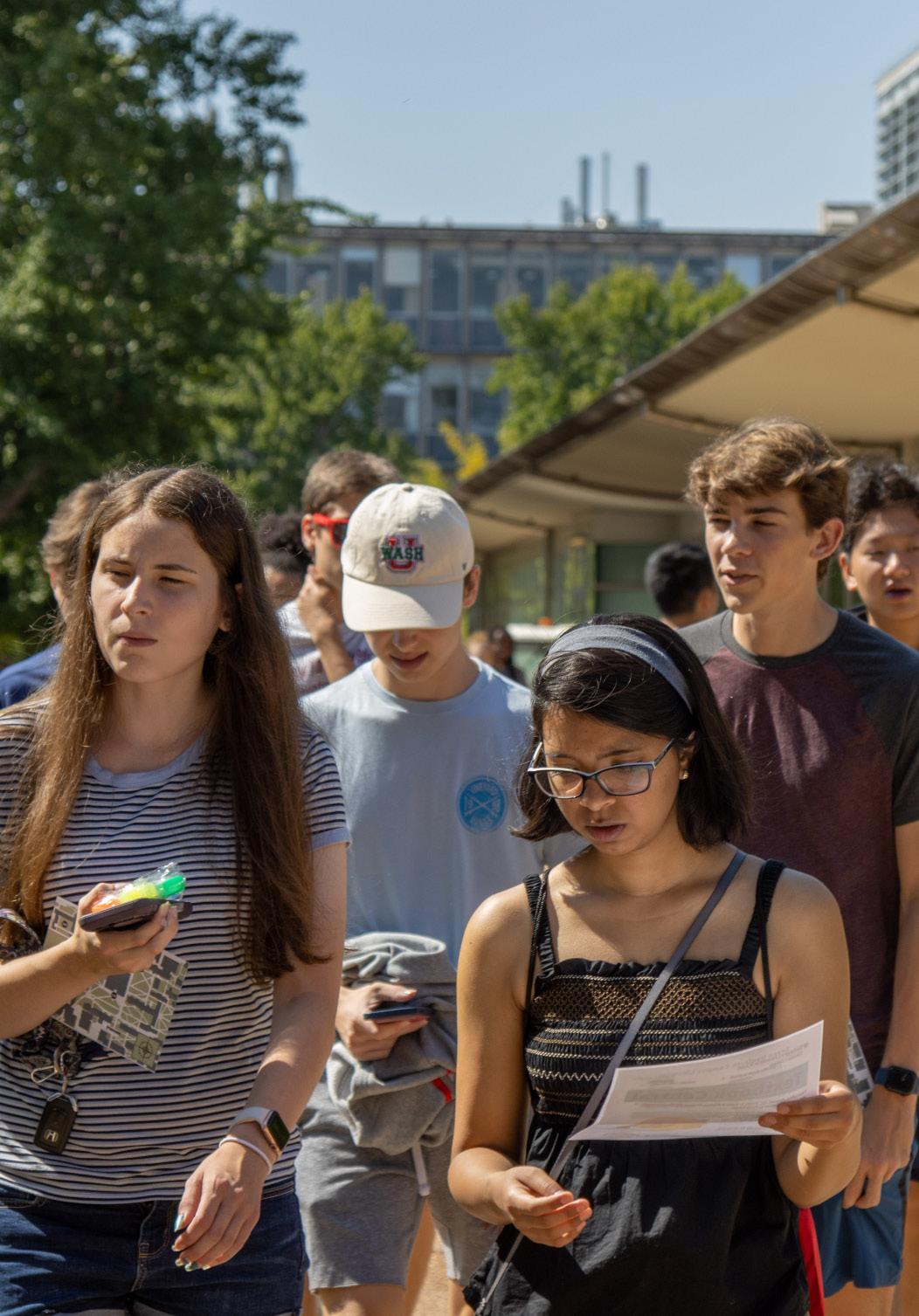
Knowing you’re not alone is likely not going to cure your feelings right now. Yes, when adults tell you that emotions will change with time as you meet new people and grow comfortable with this new place, they’re probably right. But, in the meantime, while you still feel sh*tty and sad,


start conversations with the people around you. Tell someone you eat with that you wish you were at home, or that you miss your best friends. Not only will you probably help that person feel less alone, but it could also help you process and grow closer to the people around you, as it did for me.
Since this conversation with my friends, I still put on my headphones and blast depressing indie music before and after class every morning. I still feel
uncomfortable and miss home. And I still have surface-level small talk almost every day. But I know that the people I see around me or on Instagram laughing with their friends aren’t a signal that my feelings aren’t valid or a sign that I don’t belong here. I have started to notice how many others there are — normal college students, freshman or not — quietly living their lives with their headphones on: a picture you may not see in a college movie.
JAMILA DAWKINS & REILLY BRADY | SENIOR FORUM EDITORS | FORUM@STUDLIFE.COM STUDENT LIFE 5THURSDAY, OCT 20, 2022
EARN EXTRA MONEY RIGHT HERE ON CAMPUS! Fun opportunities, often flexible hours... Email advertising@studlife com immediately to learn more!
SARA REED | STUDENT LIFE
Freshmen explore the Danforth campus together during Bear Beginnings.
We need to talk about abortion as self-defense
SUSAN FRELICH APPLETON LEMMA BARKELOO & PHOEBE COUZINS PROFESSOR OF LAW
The idea of abortion as self-defense has a long history, promoted over the years by philosophers and legal theorists. This understanding becomes especially salient today not only because the Supreme Court majority’s opinion in Dobbs v. Jackson Women’s Health Organization eliminated both liberty and gender equality as underpinnings of a constitutional right to abortion.
Arguments based on self-defense are also timely because they command so much support, exemplified by the Supreme Court’s opinion just a day before Dobbs in New York State Rifle & Pistol Association v. Bruen. In striking down New York’s license requirement for carrying a weapon in public, Justice Clarence Thomas’s opinion for the majority ruled that the regulation prevented “law-abiding citizens with
ordinary self-defense needs from exercising their right to keep and bear arms.”
Self-defense provides the underlying rationale for popular stand-yourground laws and the “castle doctrine,” an affirmative defense that allows residents to use force against intruders, without the duty to retreat, on the theory that one’s home is one’s castle. In a recent high-profile case, Kyle Rittenhouse successfully invoked self-defense against homicide charges despite facts indicating that he faced danger only because of a situation of his own making.
Why shouldn’t the same principles and values apply to abortion? If we have a right to protect our bodies from outside threats, why not from inside threats? If we can protect our brick and mortar homes from unwelcome intruders, why can’t we similarly protect our flesh and blood homes — our bodies?
According to one implicit answer from the past, voluntarily engaging in heterosexual intercourse meant that one assumed the risk of pregnancy. In
other words, to avoid an unwelcome embryo or fetus, one should simply avoid sex. (Avoiding unprotected sex would not suffice because everyone should know that birth control can fail.) Rape and incest exceptions to abortion bans rest on the understanding that sex in such settings is involuntary. Yet, rape and incest exceptions are evaporating in modern abortion bans.
Perhaps even more significantly, Kyle Rittenhouse’s case reveals that the ability to have avoided the situation prompting the need for selfdefense is not controlling. Accordingly, voluntarily engaging in sex should no more make self-defense unavailable than did Kyle Rittenhouse’s voluntary trip to Kenosha with a semiautomatic AR-15 style rifle to intervene in protests in that city.
Although the Dobbs majority spent only a single paragraph rejecting the contention that abortion bans discriminate on the basis of sex, the argument merits a second look through the lens of self-defense.
What does it mean in this era — when force in defense of oneself or one’s home is not simply legitimate but celebrated — to single out pregnancy as a virtually across-the-board exception? It won’t do to say that most bans allow abortions for “medical emergencies” or life-threatening pregnancies because self-defense is more capacious than that. Besides, the already shockingly high maternal mortality rate in the United States, ever increasing for Black and Hispanic individuals, shows that pregnancy itself presents considerable physical danger.
A related argument, again long part of the literature, relies on the principle that our laws never require us to be good Samaritans for the sake of another. Even when law imposes a duty to help, that duty does not apply when the aid to be rendered poses a physical risk. I have a duty to rescue my child only when I can do so without danger to myself. Although my child will die unless I donate a kidney, I have no legal duty to do so because of the risk to me.
Yet, abortion bans treat pregnant bodies differently, signaling that they belong not to their “owners,” but to the state, which can conscript such bodies in service to an embryo or fetus, notwithstanding the dangers. Without access to abortion, pregnancy requires exceptional self-sacrifice for the sake of another — exceptional because law imposes no similar obligations on anyone else. Both the self-defense and the exceptional self-sacrifice arguments sidestep the question whether the fetus is a “person.” Self-defense allows ending the life of a person, as does the failure to aid another in the face of danger to the rescuer.
Because the inability to invoke self-defense and exceptional self-sacrifice requirements follow a gender-based track, relying on all the traditional maternal stereotypes, courts should apply the Equal Protection Clause. Ordinarily, that would require the state to show an “exceedingly persuasive justification…under a Constitution that requires
the Government to respect the equal dignity and stature of its male and female citizens.” Yet, even if we must accept the Supreme Court’s refusal to see such gender inequality in Dobbs, so that the state’s approach needs only to be rational, still the singular treatment of the pregnant body stands out as irrational. It ignores not only respect for what Bruen calls “ordinary selfdefense needs” but also the longstanding legal privilege to choose whether to place our own safety above the lives of others, another form of self-defense.
Abortion as selfdefense rests on compelling legal arguments, with considerable history, a respectable pedigree, and provocative connections to the contemporary ascent of gun rights for self-protection, stand-your-ground laws, and the castle doctrine. As states and the public develop their responses to Dobbs, let’s bring this idea into the conversation.
An earlier version of this article appeared in the Gateway Journalism Review.
SPB’s WILD email is a lesson in transparency
JARED ADELMAN SENIOR MULTIMEDIA EDITOR
On Oct. 14, the Campus Life Instagram page announced that this semester’s WILD was canceled due to “safety concerns.” Specifically, the statement mentioned that because capacity would be capped at 3,500 people, there would be no equitable way to distribute tickets and, thus, no way to host WILD on the Brookings Quadrangle.
Unsurprisingly, I was frustrated. WILD is lauded as one of WashU’s hallmark traditions, yet, due to COVID-19, it was canceled for four semesters straight. Canceling the fifth WILD in six semesters feels like a step backwards in rebuilding the vibrant campus-wide culture that once existed prior to the pandemic.
I was, like many others, skeptical that safety concerns were at the heart
of the cancellation. While there certainly were safety issues that needed to be addressed, they did not seem irreparable. After all, WILD has been hosted in the same space, with roughly the same amount of people, for decades on end without issue. I then speculated, with no particular evidence, that there was an issue securing an artist. Maybe there was a contract dispute, or the funds had run dry. In any case, I was searching for more than an amorphous statement buried on an Instagram page. Then, in what can only be described as a bombshell, Miri Goodman, the President of the Social Programming Board (SPB), emailed students with a detailed timeline from SPB’s perspective of how and why WILD was canceled. The email was unabashedly honest and transparent, explaining all that the SPB did to accommodate, in a
quick and timely manner, seemingly unreasonable demands from the University. It not only exonerated the SPB and dismissed concerns about not securing an artist, but it also pointed out a continued disconnect between the organizing students and campus partners.
For me, the email didn’t erase the frustration I felt. It did, however, provide a much-needed dose of transparency that the administration had failed to provide. As other students have noted, nondescript administrative jargon poses more questions than it answers and often fails to address student concerns.
I understand why being fully transparent is difficult when there is sensitive information to protect or when the details may be misunderstood out of context. But when the lack of transparency shifts blame around and causes
confusion among the student body, I question the administration’s motives.
Miri — I suspect at great personal expense — gave an account of what happened that does not paint the administration favorably. I wasn’t in the room during the conversations in question and can’t validate the claims made. That being said, I’m far more inclined to believe an email with this level of detail compared to a one-page statement that was not widely circulated. Miri, along with the rest of the SPB executive board, won the battle for public opinion because of how transparent they were, not because their statement took the blame off of the SPB.
There is nothing the administration could have done to quell campus-wide frustration, especially when it seems like they are to blame. There is no silver bullet to delivering bad
news, which is exactly why the administration needs to change its messaging strategy. Surprisingly, using the same one-page, “speak-without-sayinganything” format does not always work. Sometimes, honesty is the best policy.
In this case, the honest truth does not reflect well on the administrators involved. Specifically, Associate Vice Chancellor for Student Affairs Rob Wild is described as particularly uncooperative. SPB writes in their statement that Wild “never answered any questions directly.” When Wild was asked, “How can we avoid miscommunications like this in the future?” the SPB claims that he stated he “was comfortable” putting a target on himself for the concert’s cancellation — only to release an “unclear statement” that resulted in student anger towards SPB.
What is unfathomable to me is the claim that
Wild was happy to take the blame behind closed doors, yet the aforementioned statement claims zero ownership for what happened. The temptation to obscure the details and deflect fault is understandable. However, owning the mistakes (as Wild himself had suggested) would have garnered trust for the administration among the students. Had the statement from Campus Life been written with empathy, regret, and the details of exactly why the safety concerns could not be remedied — and why all other alternatives would not work — I would have been (begrudgingly) understanding. Maybe others would not have been, and I wouldn’t blame them for being stubbornly upset, but I — and, I suspect, many other students — will always take a hard pill to swallow over a sugary placebo.
Caption this! Enter this week’s contest
10/6 Winners
BY TUESDAY HADDEN
First place: “The ‘Here and Now’ campaign is starting to look more like ‘There and Then.’”
Second Place: “I’ll wait for the herbivore, thanks.”
Third Place: “At least their carbon footprint is low.”
Scan the QR code to enter your submission by 9:00am on Monday.
 ILLUSTRATION BY TUESDAY HADDEN
ILLUSTRATION BY TUESDAY HADDEN

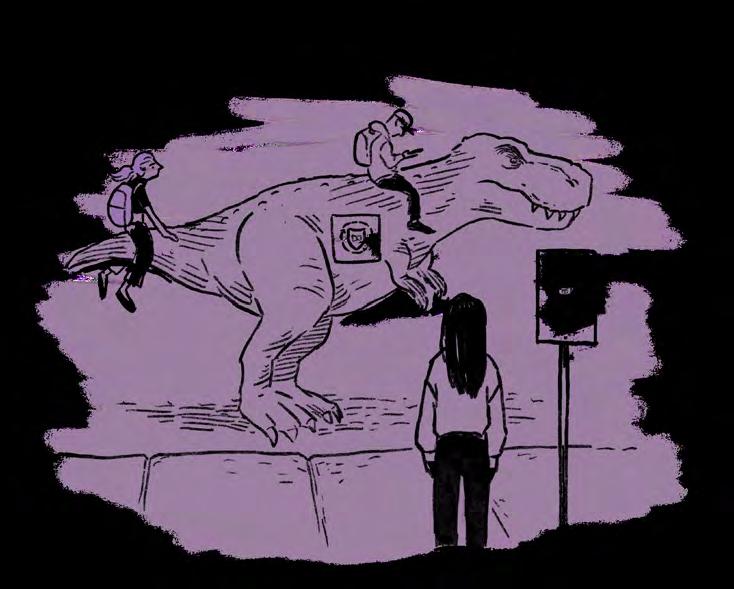
JAMILA DAWKINS & REILLY BRADY | SENIOR FORUM EDITORS | FORUM@STUDLIFE.COM6 STUDENT LIFE THURSDAY, OCT 20, 2022
ILLUSTRATION
PROFESSOR PERSPECTIVES
10/20 Cartoon
Men’s soccer bests #14 Carnegie Mellon to keep their UAA title defense alive HUSSEIN AMURI JUNIOR SPORTS EDITOR
In the 61st minute of the Washington University Bears’ game against the Carnegie Mellon Tartans, the game was tied up 1-1 as senior Armando Sanchez-Conde took a corner kick. He deliv ered a near-perfect ball to the far post of the penalty box that was untouched by anyone. Awaiting the pass was sopho more Joseph Hipskind, who volleyed the ball into the net to put in the winning shot.
The Washington University men’s soccer team defeated No. 14 Carnegie Mellon 2-1 in a crucial UAA conference matchup to improve their season record to 6-3-2. The win also extended the Bears’ unbeaten home record and cemented them in second place in UAA standings behind the University of Chicago Maroons. The win keeps the Bears’ hope of defending their UAA title alive and puts them on course to qualify for NCAA post-season playoff games.
“With the season we've had, this was such an important game for us,” said assistant coach Oscar Umar. “Last Friday's result [against Case Western Reserve University] felt like a loss. So we really pumped the guys up for this game because it [was that] important of [a] game, and I think they were able to rise up to the test.”
As contested as the game turned out to be, the opening half of the game didn’t gener ate a lot of action from either side. The half finished with both teams recording four shots, compared to the 17 total
shots that came out of the second half. Out of the four shots the Bears attempted, one of them was a curler released by junior Owen Culver that landed right in the hands of Carnegie Mellon goalkeeper in the 31st minute.
But after halftime, WashU upped the tempo of the game, bringing intensity in a competi tive and defining second half.
“We changed our shape in the second half,” said head Coach Joe Clarke. “We were playing out of what we call a 4-Diamond-2 that…was caus ing us to have to do a lot of work and getting out numbers on the flanks. So we went into a 3-5-2 so that we had outside guys [on those flanks].”
Clarke's changes in the sec ond half didn’t pay back right away. 10 minutes after the second half whistle blew, a defensive miscue outside the Bears’ 18-yard box was capi talized on by a Tartan player who ran away with the ball to slot it past fifth year goalkeeper Matt Martin for a 1-0 lead to Carnegie Mellon.
But an energetic and deter mined WashU didn’t take too long to respond and bring the game to a scoreline of 1-1. In the 57th minute of the game, after scrambling inside the Tartans penalty box trying to find an open net, freshman Zach Susee laid it on the plate for fellow freshman Nathan Szpak, who slotted the ball away to bring the scoreline to 1-1.

According to junior defender Reece Nicholson and Martin, the Tartans got arrogant after jumping to a 1-0 lead, something that the Bears wouldn’t entertain on their
home turf, during their team mates’ senior game. “We knew we were better than them and could get a result out of it,” said Nicholson. “We took that [first goal] really personally.”
“I was [happy] that we changed formation in the second half. It allowed our full backs to get forward and then I just found a lucky spot, the ball bounced to me [and I scored].” said Szpak.
After scoring his second WashU career goal, a jubilated Szpak celebrated it by hitting the famous griddy celebration with his teammates.
“We talked about [the griddy] with a couple guys before the game. Celebrations were on point today,” he said.
In the 61st minute, the Bears would put the game to bed, thanks to the corner
Cole Okmin on staying healthy and catching the deep passes
CLARA RICHARDS MANAGING EDITOR
Cole Okmin hasn’t played the most games out of the receiving core — he’s been forced to sit out of a few matchups after breaking ribs in the preseason. But when he has been on the field, he’s made an immediate impact. Okmin averaged the most receiving yards per game out of the entire squad with three touch downs. After the team’s fifth win, the wide receiver sat down with Student Life to discuss his start as a quarterback, being a veteran in a group of young receivers, and rock climbing.
This interview has been edited for length and clarity.
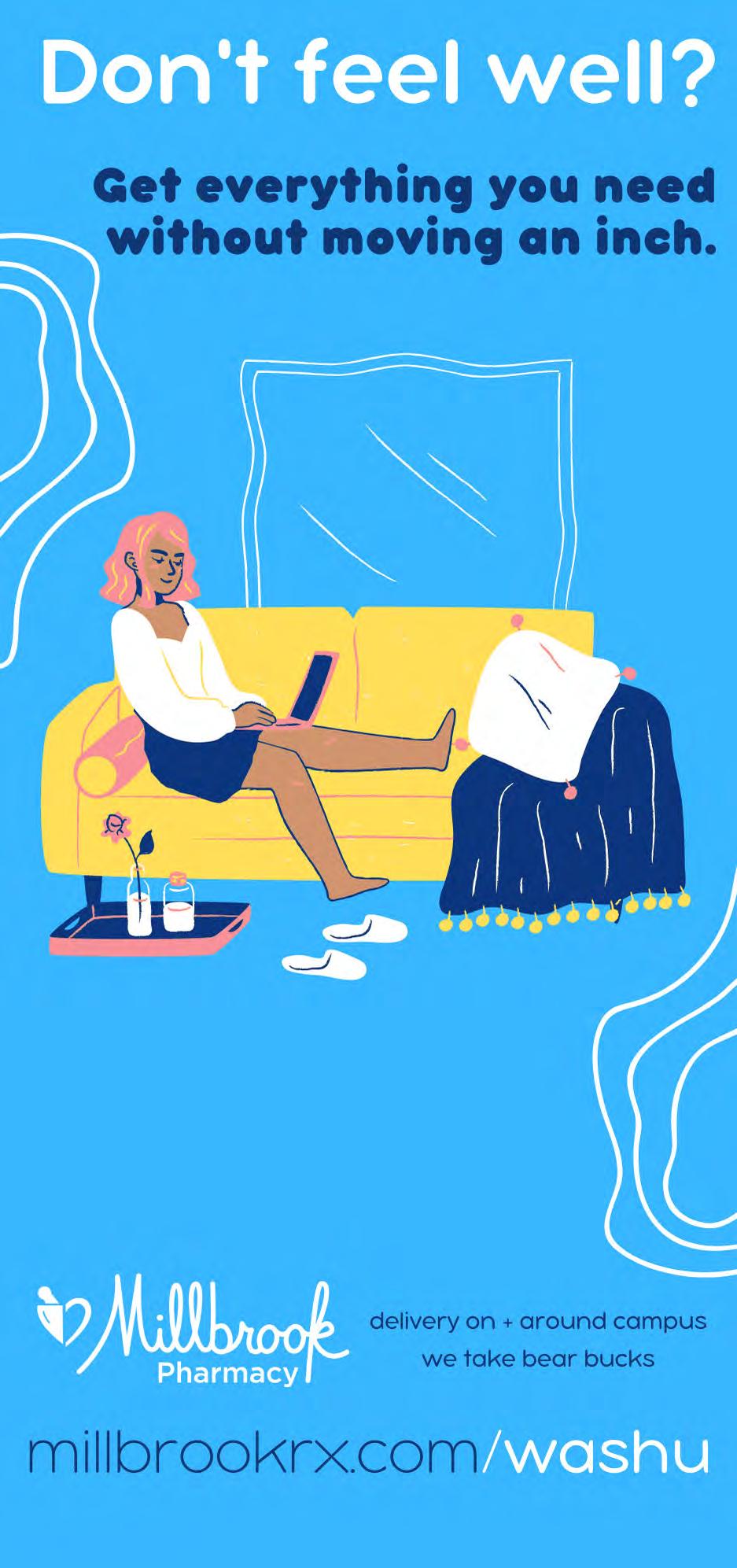
Student Life: Tell me about your football background in high school.
Cole Okmin: I’ve played my whole life — starting in 3rd grade, I played quarterback, continuing throughout high school. I had a good buddy a year above me who went to WashU, so he put the idea of WashU into my head. I was pretty set on going to Butler, but then I switched last min ute. It was kind of a no-brainer, though, [based on] the quality of [the] school and just getting to play good football. I came in as a quarterback.
SL: When did you make the switch to receiver?
CO: Before my freshman year, I injured my elbow, and I had to get surgery on it. I was like, “Can I just play something else?” because I couldn’t play quarterback. I tried receiver, and it went well, and they were like, “Alright, you’re gonna stay receiver.” I was like, sweet.
SL: Do you ever imagine an alternate timeline of you as a quarterback?
CO: [Current quarterback] Matt Rush is a stud. We both came in as quarterbacks — and, obviously, it worked out perfectly.
SL: You were recruited by Coach Kindbom, and you’ve seen the program through vari ous iterations. What changes have you seen in the past four years from Coach Kindbom to Coach Keen?
CO: Good question — recruiting-wise, I was in touch with Coach Fisher, the offen sive coordinator. But, a lot of the values have stayed the same. I think Coach Keen brings a different mindset — obviously, having control of the offense, it’s a little different, with your head coach being your play caller. He’s also emphasized a lot of important things that are gonna get us to a championship level (like put ting on weight for the linemen) because we’ve been outsized in the past.
SL: Last year, the team’s record was 7-4. I’m curious — what were your big takeaways from last season?
CO: It’s always nice to get a little downtime. I actually had a lot; I went abroad, so I was really separated from football. I went to Dublin, and hon estly, I had a little too much time away from football. After the season, we were pretty proud of what we were able to accomplish, but we knew with the team coming back that we had higher expectations going into this year. We had a lot of returning guys that played significant amounts of time, and our offense was pretty much entirely returning — it was exciting. We had a lot of work ahead of us to do, and I think a lot of people put in a lot of work in the off-season
that is showing up in games. The schedule is getting a lot tougher, so we’re gonna see what we’re really made of in the coming weeks versus these tougher opponents.
SL: Coming back, you had a little more downtime. Talk to me about the injury that kept you out of the first few games.
CO: I broke my ribs early on. I’m good now — I’m 100%. On the second day of camp, we weren’t in pads, and I got fallen on. I kept trying to come back; I got to rehab, and I should have been back after that. But I didn’t know [my ribs] were broken and just thought they were bruised. They weren’t getting better at all, so I got them checked out.
SL: Did you feel at all rusty getting back out there?
CO: No, I felt good. I was just ready to go; I was recov ering from a hip injury from the end of last season, so I did have to slowly roll into running routes again. But this summer, I felt good running again, and I honestly didn’t feel like I missed a beat.
SL: Outside of football, what are you up to?
CO: The interview process [for post-graduation jobs] is taking up a lot of time. We get some rock climbing in. Spending time with friends, reading some good books, watching some TV shows.
SL: And last question: would you rather have fish for hands or adopt a child every time you hear Bohemian Rhapsody?
CO: Adopt a child.
SL: Knowing you’d have to raise it?
CO: Yeah, for sure. I feel like I’d rather have kids than fish for hands.
by Sanchez-Conde that was put away by Hipskind. He celebrated his goal by hitting Manchester City superstar Erling Haland signature “med itation” celebration.
Carnegie Mellon tried to climb back into the game in the remaining 30 minutes of the game. But a strong WashU defense was able to fend off their multiple all-out assaults that left them extremely open to counters. Ultimately, the Bears weren't able to capitalize on those opportunities, coming up with a one-goal win “[This win] shows the per sonality of the team,” said Martin. “We're not willing to back down. We never quit. It's an integral part of our [organization]”.
With just three games left in the season, much of the WashU men’s soccer team is still concerned about defend ing the program 2021 UAA conference title. But with not much time left in the season, the team is also concerned about punching its way into the 2022 NCAA playoff games.
Defending their UAA title would guarantee them an automatic bid, but they need someone to tie or beat UChicago for that to happen. They need to win at least two out of their remaining games to be in contention for a play off spot— any other results would not only end their titledefense season, but also keep them out of the playoffs.
The remaining WashU games are away from home. Road games have been tricky for this team over the course of the season season. With a 1-3 record, the Bears will need to be at their best against the likes of the University of Chicago, who is currently undefeated, and New York University, who is 6-4-2.
“It's tough to have three road games at the very end of the season,” said Martin. “But as you can tell [that] we have a lot of excitement after this weekend. Just getting this win today is going to propel us into getting a good attitude in the next two weeks. We have a break, [so hopefully] people can get a lot of rest and we can come back even stronger.”
CLARA RICHARDS | MANAGING SPORTS EDITOR | SPORTS@STUDLIFE.COM STUDENT LIFE 7THURSDAY, OCT 20, 2022 SPORTS
ELLE SU | STUDENT LIFE
Owen Culver dribbes down the field while playing against the Trojans. Culver has scored five goals and has had three assists in ten games, with almost three times more shots on goal than anyone else on the team.
Football untouchable ahead of playing D3’s top team
 CLARA RICHARDS MANAGING EDITOR
CLARA RICHARDS MANAGING EDITOR
For a few minutes in the third quarter, the Washington University football game wasn’t a no-doubter.
In the past five games, the team has had at least a three-touchdown lead in the third quarter. But against Augustana College, they drew to a 28-28 tie in the third quar ter, thanks in part to a 71-yard punt return from the Vikings that brought the ball to WashU’s 16-yard line. The third quarter overall had been mildly unproductive for the Bears; they had 26 rushing yards to Augustana’s 73.

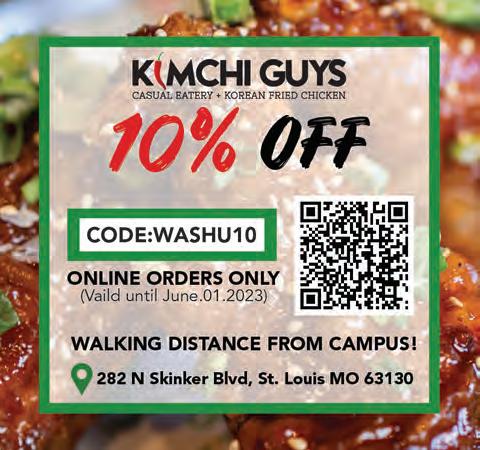
Despite it being the closest game of the season, senior quarterback Matt Rush didn’t look pressed. After the snap with 10:11 left on the clock, he took a long look at his options and pushed his squad slowly up the field with a 17-yard run from Treyton Lamphier. A 4th and 2 pass to sophomore Collin Goldberg sent the Bears to the Vikings’ 15-yard line, and two rushes from sopho more Kenneth Hamilton brought in a touchdown for the Bears to put them in a 35-28 lead.
From there, the Bears only built on their margin. Hamilton and senior Cole Okmin brought home two more touchdowns in the fourth quarter for a final score of 49-28. It put the Bears back in a familiar margin of victory — before playing Augustana, they hadn’t won by less than 29 points all season — but they left their scoring unusu ally late.
“We gave up some big plays in special teams, which is
practice reps,” said head coach Aaron Keen.
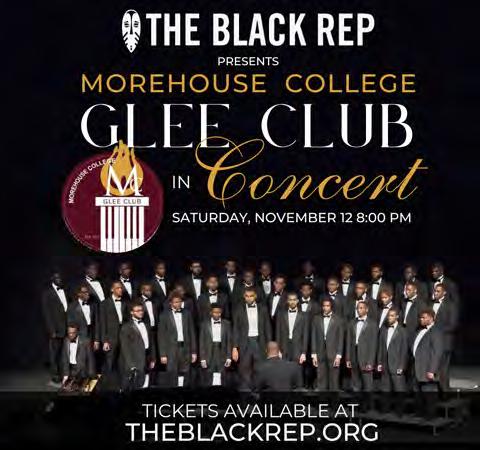
“They found some weaknesses in what we’re doing…I’d like to put our defense in a lot bet ter spots, is the bottom line. It’s hard to put them in short fields and expect them to come up big every time.”
The victory marks WashU’s sixth win in as many games, buoyed by a big defensive stand in the third quarter and two sacks to force an Augustana fourth down in the fourth quarter. They are now ranked twenty-first in the country.
But WashU has a hefty challenge ahead of it, match ing off against North Central College. Both WashU and North Central come into the matchup 5-0 in the CCIW. Only one can leave unde feated. North Central’s record has been particularly impres sive in its past two games, where it has outscored its opponents 138-0.
“I don’t think anybody on our team would be happy if I said I just want to be competi tive,” Keen said. “They
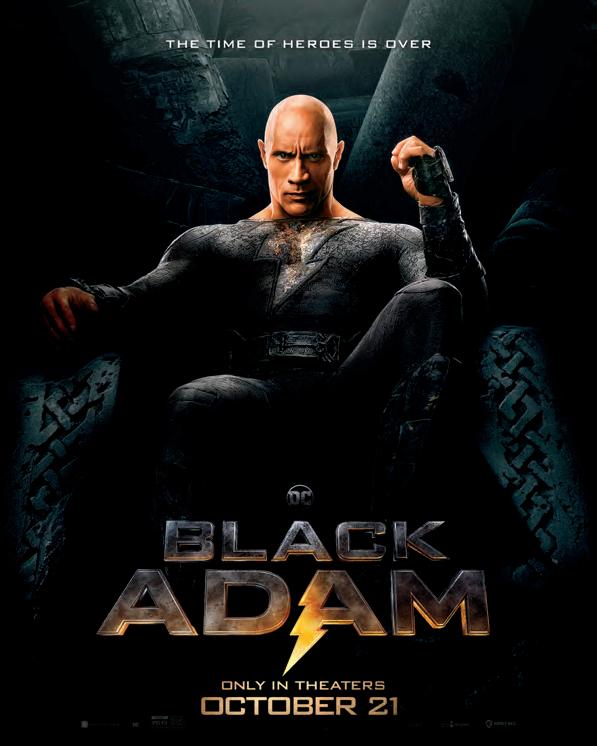


want to win this football game, right? And that’s what I love about the guys we have on our rosters. They chose this institution for a great education, but they also want to compete for championships, and we’ve got an opportunity to do that. I’d like to see our guys compete against the best team in the country and come out on top.”


Last year, the Bears fell 59-20 to North Central and were down 49-0 in the third quarter. “It’s exciting to have the number-one team in your conference. There’s always the sour taste of the past years playing them, just them kick ing the crap out of us,” Okmin said. “Thinking about it in the offseason, you always think, ‘How are we going to beat these top teams?’ Our motto was to close the gap to where we were last year. And I think we’re in the process of that.”
That close-the-gap motto is one that was in the mind of the offense as Rush ran plays with his receivers dur ing sunny afternoons during the spring. It was in the players’ minds as they came to campus before school started for camp. And as the team has honed its plays and locked down its defense, it has made improvements that it’ll hope to use against the top-ranked team in Division III.
“There’s nothing to lose,” Okmin said. “We’re play ing the number one team in the country. No one expects us to win. Why not go out there and be the ones to beat them?”
Where volleyball stands going into conference championships
A successful regular sea son is winding down for the Washington University women’s volleyball team as the No. 4 Bears wrapped up UAA play this weekend in Rochester, New York.
WashU split its final two matches of the sea son. It defeated top ranked University of Chicago in a dominant three set match. Both teams came into the match 4-1 in the UAA, but Although the individual sets were close — the Bears won the second and third set by two and three points, respectively — WashU emerged ahead in many statistical categories. They totaled almost double the number of assists during the match and had 20 more kills.
But just hours later, the team fell to Case Western University, a team that



came into the match 3-3 in the UAA. The match stretched to five sets, WashU attempting to bat tle back late. Ultimately, a 15-13 final set cemented a 3-2 loss for WashU.

Despite the loss, the Bears finished UAA play 5-2, with their only losses being to Case Western and Emory University. Only New York University is ahead of them in the stand ings with a 6-1 record. The top-ranked team only has one loss on their confer ence record, a 3-2 underdog win from the Bears in the first UAA round robin.

“I am really proud of the finish we had for our regular season UAA roundrobin play,” head coach Vanessa Walby said. “I have been in the UAA since 2008 and this is the most competitive the UAA has ever been. It is fun to see and is a huge compliment to all of our universities.”
The team has been led by
fifth-year senior Michaela Bach, who has a team-lead ing 317.5 points and 278 kills. Senior Taryn Gurbach was a key defensive figure on the team with 324 digs.
Freshman Sam Buckley had 917 assists, playing 87 sets in her first year.
With the UAA tourna ment still a few weeks away, the Bears will have time to improve. With six out-of-conference games remaining before the tour nament, Walby wants to see her team finish strong going into postseason play.
I really want us to focus on staying connected, stay ing healthy, and finishing strong with our matches we have left,” Walby said.
The Bears will resume play on Friday against Cornell College when they host their Cancer Awareness Night. The UAA Championships, hosted by New York University, begin on Friday, November 4.
drink. dine. play.WEEKLY BAR, RESTAURANT AND FUN GUIDE STUDLIFE.COM Wherever you are, stay connected: Subscribe to our free e-newsletter... head to studlife.com now and sign up! FACEBOOK.COM/STUDLIFE @ STUDENTLIFENEWSPAPER @ STUDLIFE 7018 PERSHING AVE 314-726-3030 CLAYTON/WASH U WE ARE THE DELIVERY EXPERTS! V LARGE 1-TOPPING PIZZA $1099EACH CODE: 9011 OPEN LATE! SUN-THURS 10:30AM-12AM FRI & SAT 10:30AM-1AM 8 STUDENT LIFE THURSDAY, OCT 20, 2022 TWOBLOCKS FROMCAMPUS!7347FORSYTH OPEN UNTIL 1:15 A.M. Wash U Students Save 25% after 7pm! Thursday Night= STUDENT NIGHT GALLERIA 6 CINEMAS galleria6cinemas.com GET YOUR TICKETS NOW
ARIEL RICHARDS | STUDENT LIFE
ANDREW KASTELMAN JUNIOR SPORTS EDITOR
PHOTO BY NOAH ORLOFF | STUDENT LIFE
The Bears line up after playing in the Washington University fieldhouse.
CLARA
RICHARDS | MANAGING SPORTS EDITOR | SPORTS@STUDLIFE.COM








 JIMMY HU AND NINA GIRALDO CONTRIBUTING WRITER AND JUNIOR NEWS EDITOR
JIMMY HU AND NINA GIRALDO CONTRIBUTING WRITER AND JUNIOR NEWS EDITOR





 MIA BURKHOLDER CONTRIBUTING WRITER
MIA BURKHOLDER CONTRIBUTING WRITER










 ILLUSTRATION BY TUESDAY HADDEN
ILLUSTRATION BY TUESDAY HADDEN















